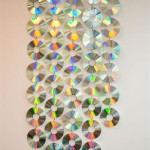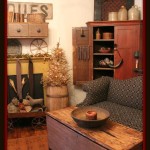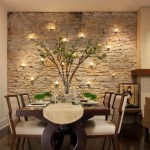How to Decorate Your Living Room with a Sectional Couch
The sectional couch, a popular choice for living rooms, offers comfortable seating and a versatile design element. Its size, however, demands careful consideration when planning the overall layout and decor. Effectively decorating a living room centered around a sectional requires a strategic approach to ensure a functional and aesthetically pleasing space. This guide provides a comprehensive overview designed to assist in the process.
1. Assessing the Living Room's Dimensions and the Sectional's Placement
Before purchasing a sectional, accurately measure the living room. Note the width and length of the space, along with the placement of doors, windows, fireplaces, and built-in features. Sketching a basic floor plan can be incredibly helpful. Once the room's dimensions are known, select a sectional that appropriately fits the area. Consider various sectional configurations, such as L-shaped, U-shaped, or curved designs, paying attention to the overall footprint of each option. The placement of the sectional should maximize traffic flow and promote conversation areas. Avoid blocking pathways and consider the viewing angle to a television or focal point, such as a fireplace. Experiment with different placements on the floor plan before making a final decision. Ensure that a comfortable amount of space is available around the sectional, allowing for movement and adding other pieces of furniture such as coffee tables, end tables and decor.
2. Deciding On The Sectional's Style and Fabric
The style and fabric of the sectional play a crucial role in setting the overall tone of the living room. Sectionals are available in a wide array of styles, ranging from modern and minimalist to traditional and classic, to mid-century modern and contemporary. Consider the architectural style of the home and the desired atmosphere. The fabric selection impacts the style and the overall aesthetic. Durable and stain-resistant fabrics, such as performance fabrics, are excellent choices for high-traffic areas or homes with children or pets. Leather provides a luxurious and timeless appearance but requires regular maintenance. Consider the color and pattern of the fabric. Neutral colors offer versatility and allow for easy incorporation of accent colors through throw pillows, blankets, and other decor. Bold patterns can serve as a statement piece but may limit the flexibility of future decorating choices. Take into account the amount of natural light available in the room and choose the fabric color accordingly. Lighter colors can brighten a space, while darker colors can create a cozy and intimate feel.
3. Selecting a Complementary Color Palette and Accent Furniture
Once the sectional's style and fabric are determined, select a complementary color palette. The sectional provides a central element, and the chosen colors should enhance its appearance and create a cohesive look. Consider incorporating a blend of a primary color, a secondary color, and an accent color. For example, if the sectional is a neutral gray, add a pop of color with a vibrant throw blanket or artwork. Select accent furniture that complements the sectional's style and scale. A coffee table should be appropriately sized for the sectional and the overall space. End tables provide surfaces for lamps, drinks, and other accessories. Consider the materials and finishes of the accent furniture. Metal, glass, wood, and stone can integrate harmoniously with a variety of styles. The goal is to create a balanced and well-proportioned space. Avoid overcrowding the room or choosing furniture that overwhelms the sectional or the space itself. A judicious selection of pieces will enhance the functionality and visual appeal of the living room.
4. Arranging Lighting to Maximize Ambiance and Functionality
Effective lighting is integral to creating a welcoming and functional living room. Integrate a layering approach that combines ambient, task, and accent lighting. Ambient lighting provides overall illumination for the room. Consider recessed lighting, a ceiling fixture, or a statement chandelier. Task lighting provides focused light for specific activities. Place floor lamps or table lamps near the sectional for reading or other tasks. Accent lighting highlights architectural features or decor elements. Use wall sconces, picture lights, or spotlights to create visual interest. The placement of light sources should be considered in conjunction with the sectional's placement. Ensure adequate light is available for seating areas and that lighting does not create shadows or glare. Use dimmers to adjust the intensity of the lighting and enhance the ambiance. Consider the color temperature of the light bulbs. Warm white light can create a cozy atmosphere, while cool white light can provide a more modern and energetic feel.
5. Incorporating Decorative Elements and Accessories
Decorative elements and accessories personalize the living room and add visual interest. Start with a well-chosen area rug to anchor the sectional and define the seating area. Select a rug that is appropriately sized considering the sectional and overall room dimensions. The rug’s color and pattern should complement the sectional and the overall color palette; consider a print or texture as a way to infuse an alternative visual component. Throw pillows and blankets introduce texture, pattern, and color. Vary the sizes, shapes, and textures of the pillows for a diverse and engaging effect. Select artwork, decor items, and shelving that reflect the occupants' personalities and tastes. Create a gallery wall or display artwork above the sectional or across other visible walls of the living room. Use shelves to showcase books, plants, and decorative objects. Incorporate plants to add life and natural elements to the room. The judicious use of accessories and decorative elements will elevate the living room by creating a cohesive and comfortable atmosphere.
6. Utilizing Space Efficient Ideas
Living rooms with sectionals can be challenging due to their footprint. In order to make a living room aesthetically practical, several space-saving strategies can be implemented. Consider a sectional with built-in storage compartments to hide blankets, pillows, and other items. Opt for a coffee table with a lift-top or storage drawers to offer additional storage space that is easily accessible. Utilize vertical space by adding shelving units or bookcases to store decor items, books, and media. Use mirrors to create an illusion of more space. Consider corner shelves or wall-mounted shelves to maximize space efficiency. Choose furniture with clean lines and a minimalist design in order to give more space within the design. Be mindful of the scale of the furniture and avoid oversized pieces that can make the room feel cramped. Plan the layout with space efficiency in mind. This can be done by considering the functionality and aesthetics of the entire room.

Small Living Room Decor Ideas With A Sectional

18 Creative Sectional Sofa Ideas For Your Living Room

Sectional Sofa Design Ideas For Your Home Designcafe

Best Design Ideas For Gray Sectional Sofas
:strip_icc()/CasaWatkingsMCM-0a1d38fc37b947d2a6a245374f14a87a.jpg?strip=all)
20 Gorgeous Sectional Living Room Ideas

48 Comfortable Sectional Sofa For Your Living Room Matchness Com Designs Apartment

How To Decorate Above A Corner Sectional Sofa 3 Simple Pretty Ideas Grey Walls Living Room Brown Decor And

Best Sectional Sofas For Every Style Of Living Room Decor Sectionals

Best Design Ideas For Gray Sectional Sofas

Small Living Room Decor Ideas With A Sectional







